Sharing my knowledge on the craftsmanship of vintage cast iron learned from an expert as well as my favorite cast iron recipes.
Vintage Cast Iron
If you know me, or if you have kept up with my blog, you know that I have a special love for vintage goods — especially cast iron. After researching the topic of vintage cast iron over the years as I found interesting one-off pieces, I decided to really dive into the topic via speaking with an expert. After a history and fact-packed conversation with a new friend, I wanted to share all I have learned about vintage cast iron, along with a few of my all time favorite cast iron recipes.
Conversations with a Cast Iron Expert
It was a moody, soon-to-be rainy day in Atlanta as I traipsed through the outdoor vendor section at a familiar haunt for me, Scotts Antique Market. The outside market of the South building is always a treasure hunt, more-so than the antique vendors inside. Architectural salvage, piles of mismatched silverware, and “another man’s treasures” abound, the market is only open once a month so I do what I can to venture South of the city to take advantage of the opportunity.
Today, however, my plan is to spend more time inside the building than outside. I’ve got an appointment to meet with John Taylor, though it is certainly not my first time perusing his booth at the market.
John Taylor: Cast Iron Expert
When you walk down the hallway where John Taylor’s space resides, it’s not long before your eyes find their way to his white pegboard walls filled with row after row of vintage cast iron pans. I’m quite the fan of making a statement in a big way with a collection of similar items such as these cast iron skillets. You can certainly say John and his wife, Janis, have done just that with their market space.
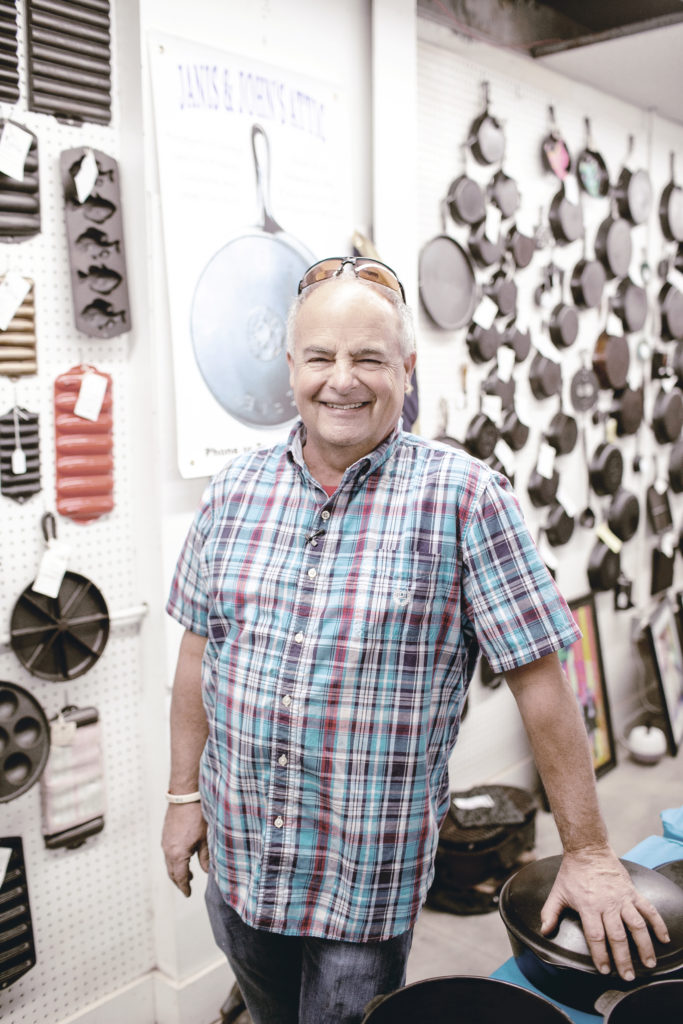
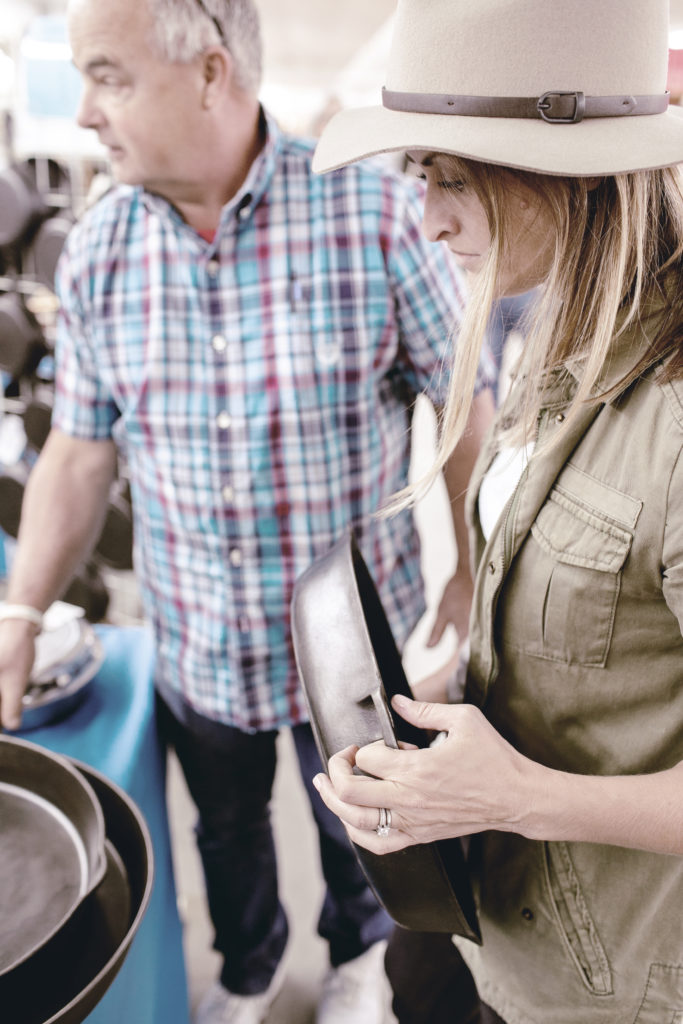
Long-time antique collectors, you can find them in their usual spots – from Scotts to the Nashville Flea Market to a scattering of spots in antique malls in historic smalls towns like Monroe, Georgia where they reside. It only takes a glance in his direction or a glimmer of interest in a pan for John to engage in a friendly conversation. John goes through the unique markings, history of the pans, and where they originate from as you instantly fell his passion for the vintage cookware.
Because I frequent antique stores, vintage markets, and estate sales, I come across a good bit of vintage cast iron here in the South. Cast iron, after all, is the root of all good cooking in our region and I don’t know a grandmother around who doesn’t have a #10 skillet or Dutch Oven in her arsenal. To say these are a staple in a southern kitchen would be an understatement.
A Passion for Vintage Cast Iron
After being schooled on a few of the major foundries, pan markings and the mold + casting process, I asked John how he came to know so much about the topic of Cast Iron. He’s self taught and continually educates himself on the in’s and out’s of the industry.
You can tell from his storytelling, conversational ways that he’s naturally inquisitive and has spent a lot of time asking a lot of questions, reading and researching to spit the kind of knowlege that he’s able to recite at a moments notice. I’m not sure I came across a detail that he couldn’t enlighten me on during our entire 2 hour conversation.
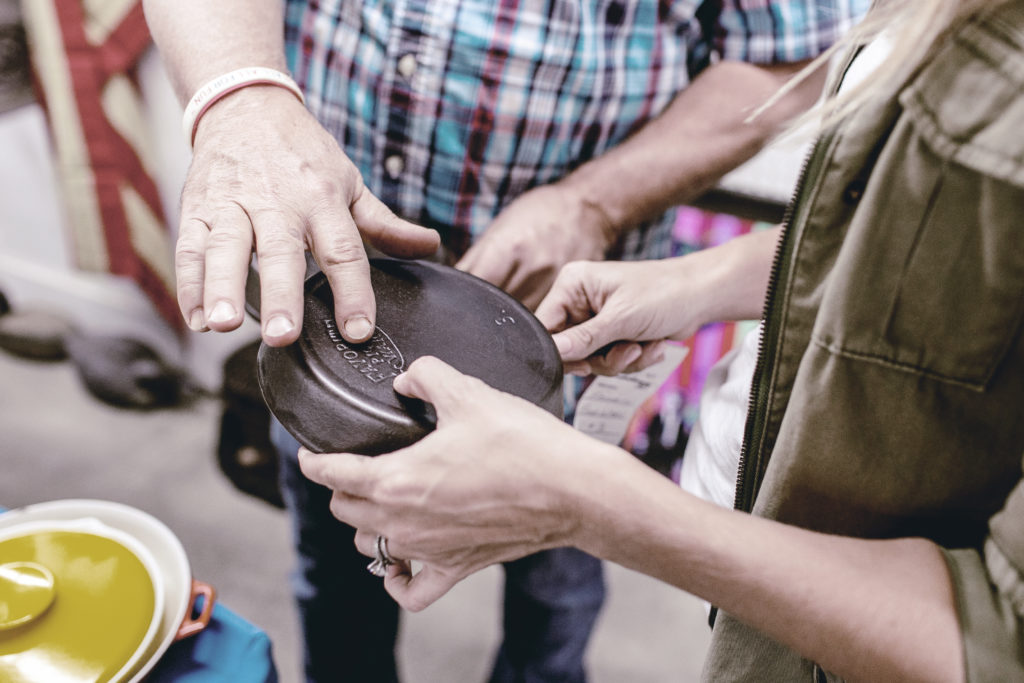
When I run across cast iron pieces in the wild, the condition and pricing is all over the place. Like many things antique, folks will find them and price them without knowing much about their history or worth so overpaying for a common piece is certainly a concern. But for me, overlooking a gem of a pan is a greater risk these days. So my goal is always, like John’s, to soak in as much as I can from these experts so that I’m knowledgeable enough to be an informed buyer of old stuff.
History of Cast Iron
John and Janis have become so much more than buyers, they are true collectors. They honor the story of the pans and the makers, carrying on the history of each skillet by informing buyers + onlookers alike. I learned so much for my time with John as he ran me through the basics of the foundries that helped to shape the industry of Cast Iron.
Makers like Wagner, Sydney, and Griswold are among the common ones true Cast Iron collectors covet. While Lodge Cast Iron from Pittsburg, Tennessee are today the most widely known and used pans, vintage pieces have their own markings and stories that come along with the pieces. Lesser known treasures can be found from makers such as Favorite Piqua Ware or Birmingham Stove and Range. As luck would have it, John has pans from any of them in his collection at any given moment. In fact, he mentioned to me that he has container after container of cast iron just waiting to be restored and brought forward for the rest of us to enjoy.
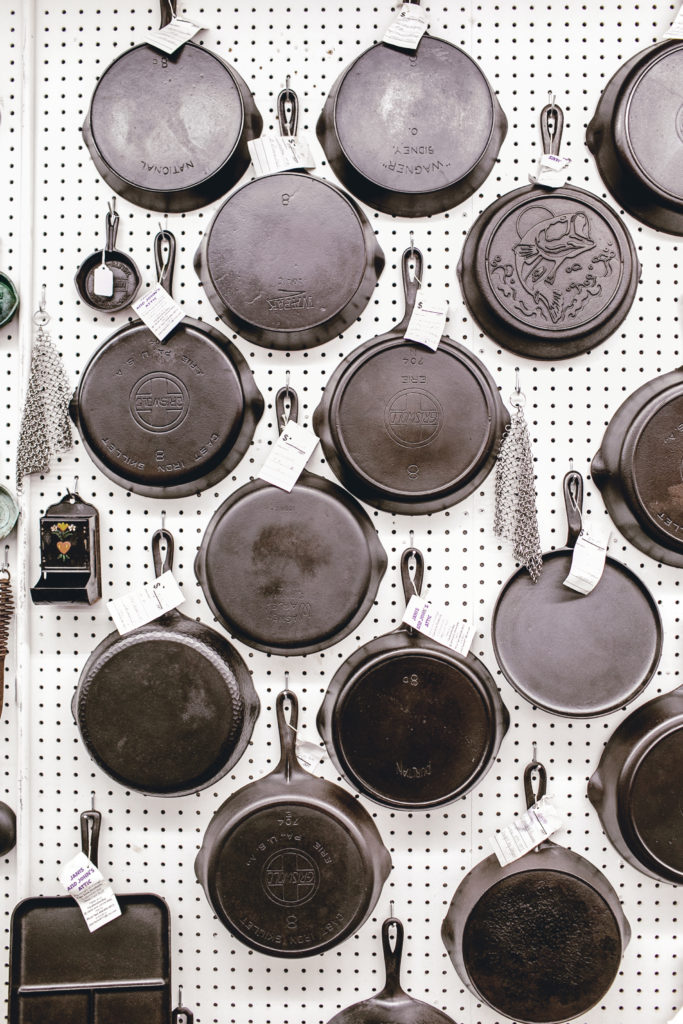
Cast Iron Restoration
Aside from his knowledge of industry history and his wide-spanning collection, John Taylor has perfected his craft of cast iron restoration. A lengthy, time-consuming, pan-by-pan process, you can see the wear and tear from the years of heat and lye on his own hands. Bringing a rusty old piece back to life is all a part of the process and you can tell he does it with craft and care.
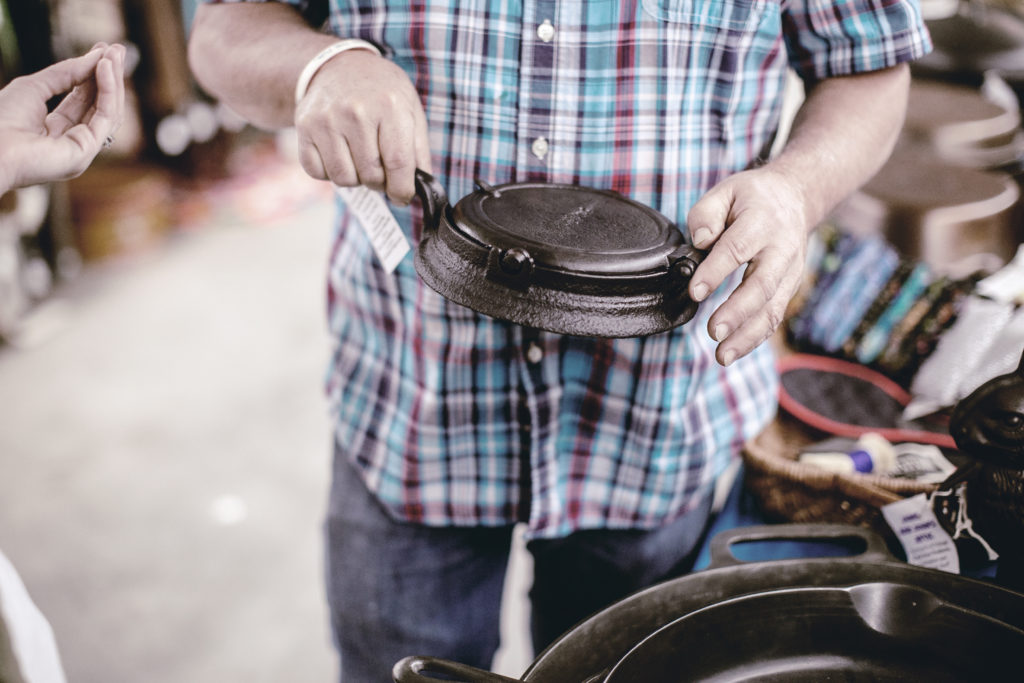
The result of the restoration is a beautiful labor of love that is evident in the pieces I gaze at on his walls. Their interior finish is smooth and seasoned, and you can tell instantly that it will fry up a crispy egg for breakfast far better than any of these newfangled, non-stick pans of today. They’ll last a whole lot longer too, he mentions. Because if you weren’t lucky enough to inherit a coveted heirloom pan from your own Grandmother, then the next best thing is picking out a special one from him that cooks up a Sunday roast just as well as hers once did.
Beauty in the Imperfections
I came to learn that vintage cast iron has a thinner wall than the cookware we know today, giving it a more even cooking environment. You’ll notice the old pans aren’t perfect. Having been cast from sand molds he explains to me the packing and shifting that can occur, educates me on the gate mark and how gas cooking on old stoves could leave a scorch mark on the bottom of these pans. Pointing out these imperfections only helps you to see the beauty and age in their patina and I find myself wondering just how many meals the heavy, shallow pan I hold in my hands has cooked in its lifetime.
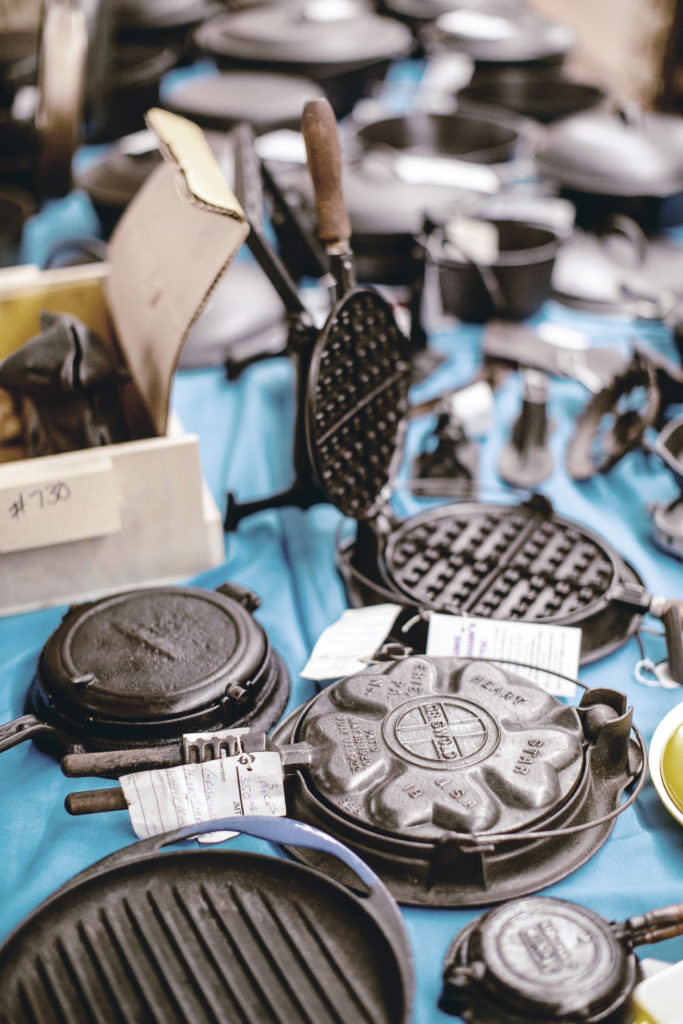
My Cast Iron Purchase
While I could have stayed and learned much more, I proceeded to take the next 30 minutes to decide which pan to take home for myself. Weighing on the practicality of what size pan I need in my growing collection, to finding my eye wandering among the graphic nature of the pan logos and text, to getting caught up in his stories of which pans he had that day were truly the most special, the Griswold cross and the Wapak Indian head have graphically been two pieces I’ve been wanting to pick up.
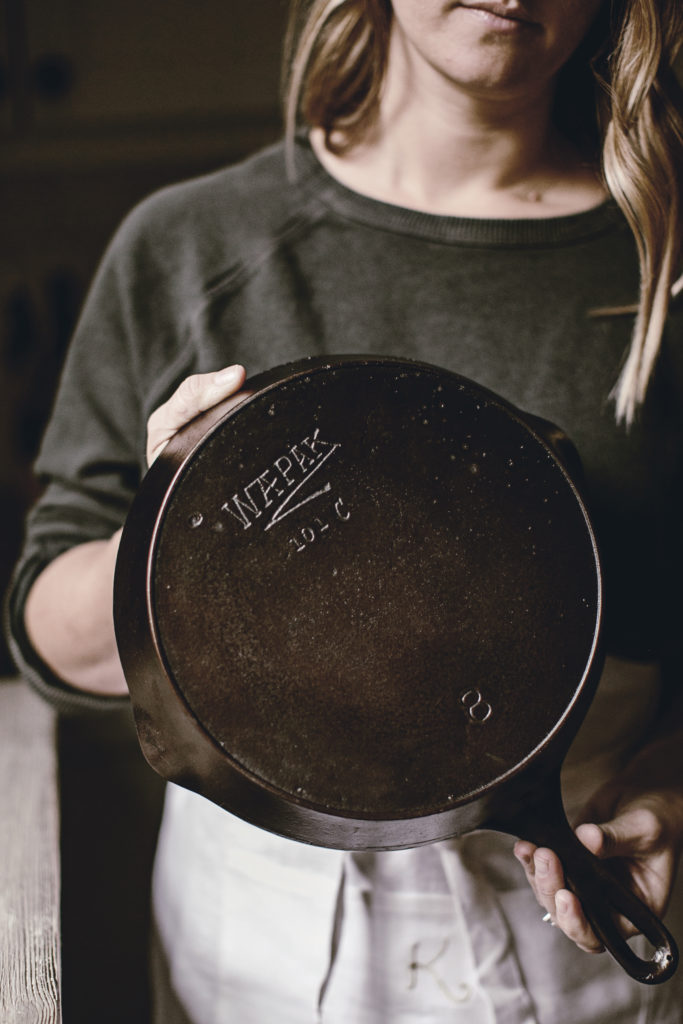
I finally settled upon a gorgeous vintage Wapak #8 skillet (sans Indian) with a finish on it that just spoke to me the moment I saw it, the perfect addition to my kitchen. I think he was a little disappointed after all the knowledge I had soaked up that I didn’t go for the smaller pan with a truly unique mark that meant it was the last pan made of the day, and to be honest I still have buyers remorse for not bringing them both home that day. Not an uncommon ending for my fellow collectors out there, I’m certain.
Identifying Vintage Cast Iron

1. Pan Size
This number identifies the size of the pan, a number that still holds true today.
2. Maker Name
Each Maker, foundry name, or mark can be found in a variety of iterations.
3. Foundry Location
Often you’ll just see a city name listed, such as Piqua, Sydney, or Erie
4. Mold Number
At the end of the day, foundry workers would be paid by how many pans had been made by the mold they used that day.
Caring for Cast Iron
From cleaning to seasoning, here are my best tips and tricks for caring for your cast iron so it lasts for generations. For a more in-depth look at caring for cast iron, check out this blog.
Cleaning
Wash your skillet using hot water and a sponge. Pour water out of the skillet so it remains damp inside and pour a generous about of kosher salt and rub any remaining residue by scouring with sponge and salt. This acts as a non-abrasive method that will not scratch the surface of the pan but provides enough texture to scrub the pan clean.
Drying
Properly drying your cast iron pan is one of the most essential components to long-term care. Water left on cast iron will rust your pan. Dry your pan with a cloth and then stick it into a warm oven for a few minutes to really take the moisture completely out.
Seasoning
Cover your pan with a small amount of cooking oil. Place the pan in the oven upside down and place a sheet of foil or a baking sheet on the bottom rack to catch any oil that may drip from the pan. Heat the cast iron for one hour at 350 degrees. Remove the pan from the oven and let it cool.
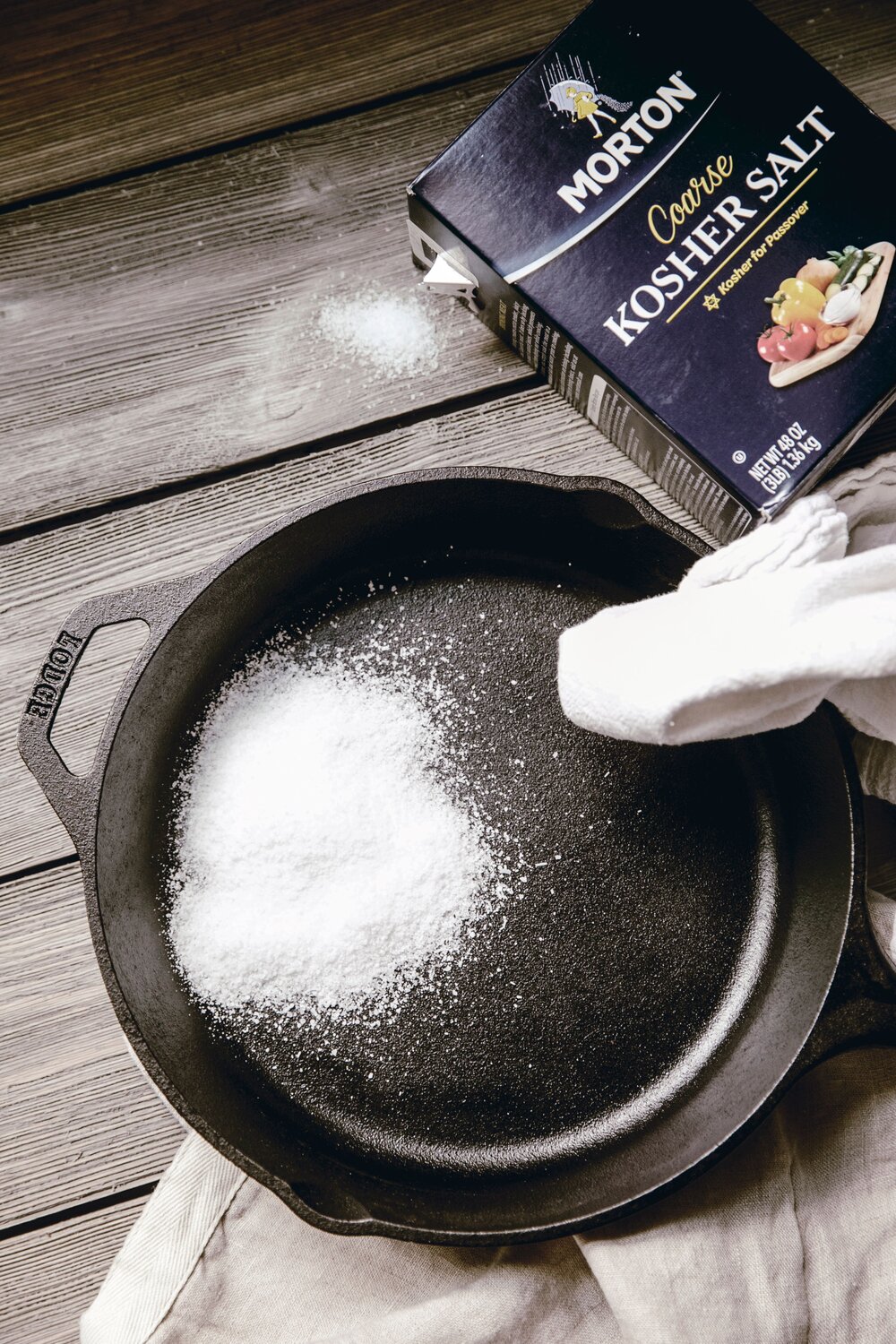
My Favorite Cast Iron Recipes
Rosemary Skillet Bread
A perfect recipe with a crispy outside, tender inside, and fragrant aroma. You’ll never buy store-bought bread again.
I am always looking for ways to incorporate fresh herbs from my garden into my cooking, and this recipe for rosemary bread is one of my favorites.
Homemade bread is one of the best things in the world, and this version is so simple and easy. I just love the combination of the garden-fresh rosemary with olive oil and sea salt. The bread bakes so beautifully in my vintage pan I got from our cast iron expert, John.
There is something especially nostalgic about cooking in a cast iron pan, especially one with a story. The cast iron crisps up the bread perfectly, leaving the exterior a gorgeous golden-brown, and the inside airy and fluffy. For the rosemary skillet bread recipe, click here.

Skillet Cornbread with Leeks
So full of flavor, a mixture of fresh corn kernels and leeks makes this a must-make variation on the classic cornbread.
I love corn so many different ways and especially love white Silver Queen corn, grabbing it right off the back of a pickup truck and rolled up inside a big paper bag to bring home and enjoy. This Skillet Cornbread recipe is one that I thought up myself, cast iron cornbread filled with fresh green leeks and kernels of corn right off the cob.
Cooking your cornbread in cast iron gives it a beautiful crispness to the crust that I just love. It also seals in the moisture inside the loaf, providing the perfect balance and texture especially, when smothered with a little pat of butter on top.
I love this dish because its hearty and a perfect side dish as the weather gets cooler, and pairs nicely with chili. You can also try a hot slice of this cornbread topped with some Herbed Butter or Honey Butter for even more added flavor. For the Skillet Cornbread with Leeks recipe, click here.
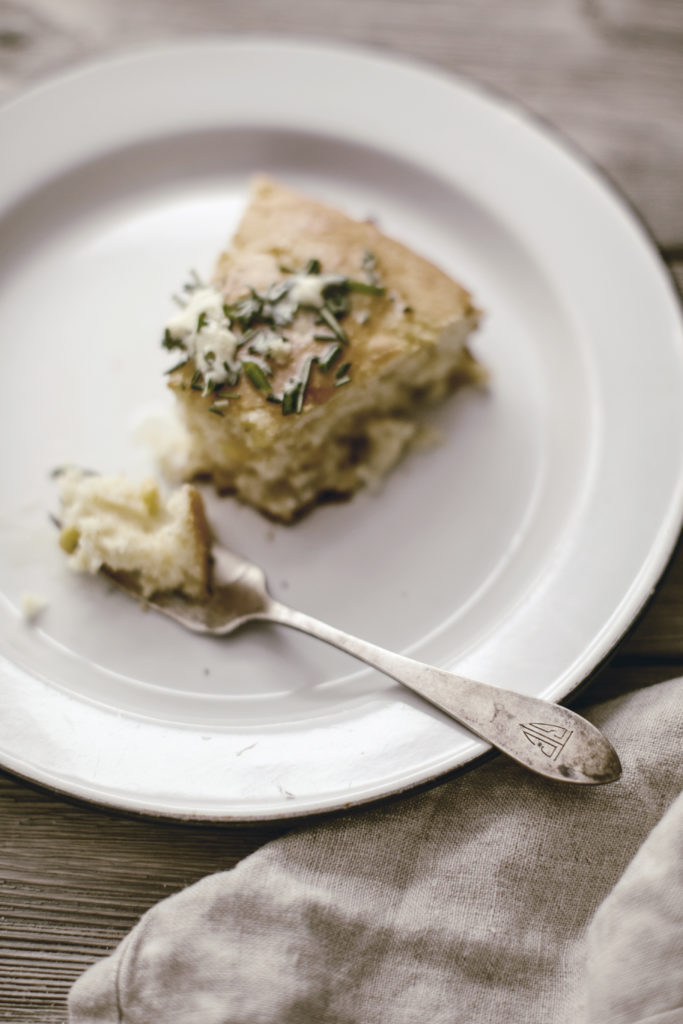

Fried Green Tomatoes
A southern staple, these beauties are fried to perfection in the iron skillet. Anyone who has ever grown tomatoes in their own garden knows that when the plants begin to overproduce, there are only so many tomato recipe variations you can make at one time. So utilizing the green ones before they’ve ripened is a no-brainer.
I must admit, I also love my green tomatoes pickled (with a side of Bloody Mary, of course) and they really are just so beautiful when sliced and stacked in a jar of brine.
Like any perfectly-fried food, this one is all about getting the right batter coating and consistency. I like Fried Green Tomatoes just about any way you can fix them and have had a variety of crusts over the years, from a more foamy, beer batter to my personal favorite, which gives a crunchier texture with cornmeal and bread crumbs. For the fried green tomato recipe, click here.
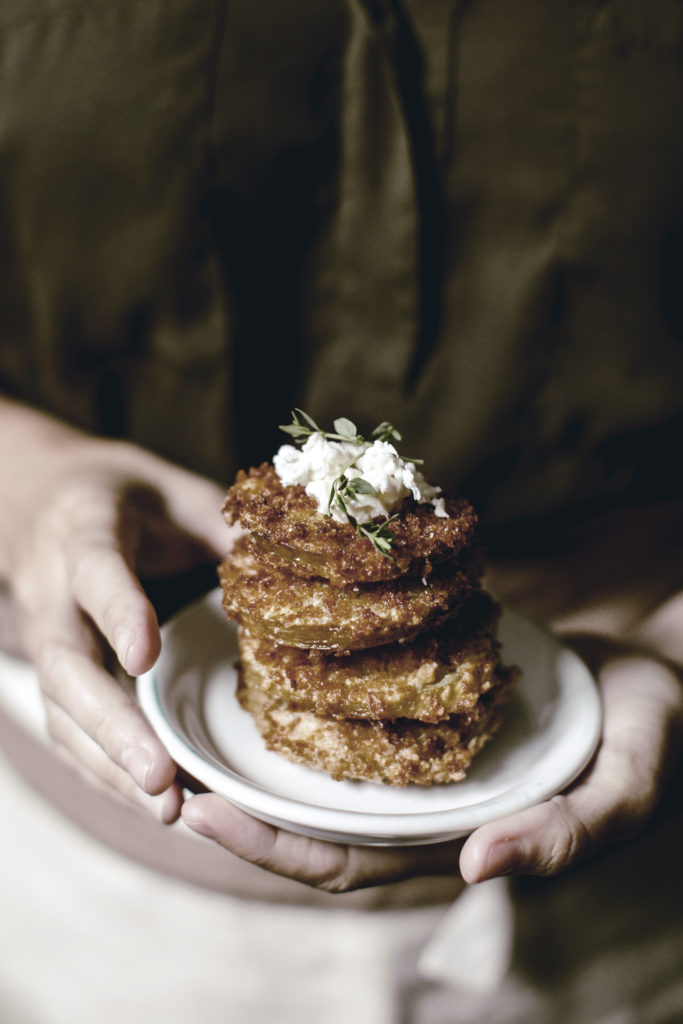

Apple Buttermilk Skillet Cobbler
I decided to make this recipe for the first time after the best apple picking trip in the North Georgia mountains with my oldest son, Wyatt. We wanted to bring back our peck of apples and make something yummy for the family.
This recipe came from an amazing cookbook that the author, Brooke Bell, passed along to me. Cast Iron Baking is a cookbook filled with cast iron recipes, which already made me fall in love. You know any book where I can cook with my cast iron skillet for each recipe is a win / win. This dessert recipe quickly became a family favorite.
For as simple as this recipe is it’s absolutely delicious and beautiful too. And trust me, it may seem like a lot of butter when you pour the batter in, but it all works out in the end. How’s that for Southern cooking?
For the apple buttermilk skillet cobbler recipe, click here.
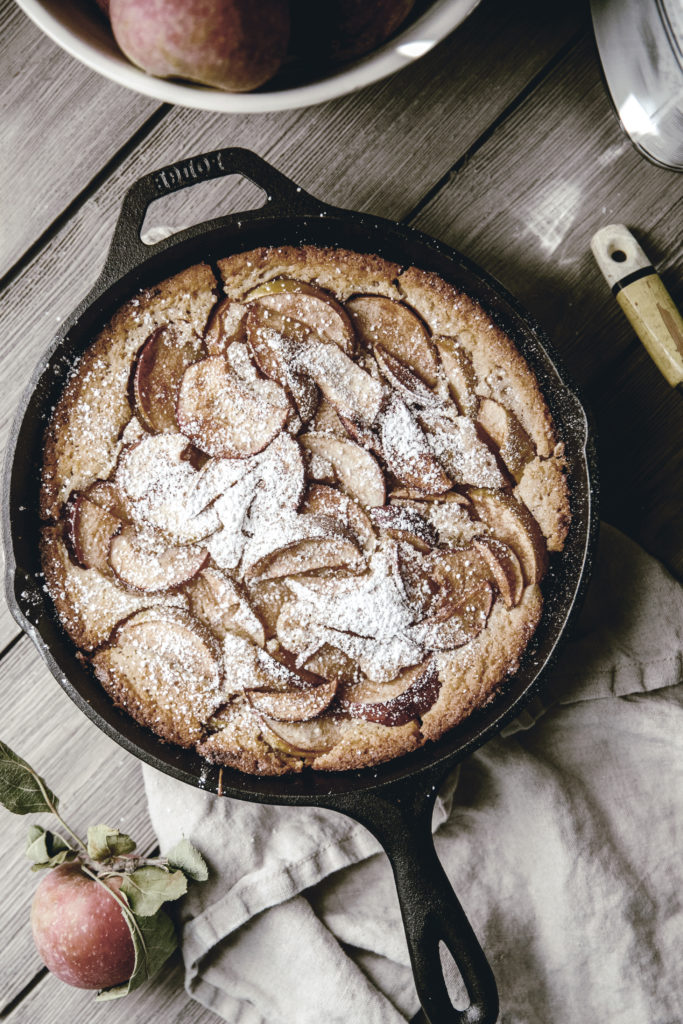
Chocolate Chip Cookie Skillet
If you’re looking for an easy, impressive, and delicious dessert for your guests, this skillet cookie is a must-try.
I’m a fan of effortless yet impressive and trust me when I say that if you set a giant, warm chocolate chip cookie on the table topped with a few scoops of vanilla ice cream then you will pretty much turn anyone into a dessert lover.
For the easy chocolate chip cookie skillet recipe, click here.
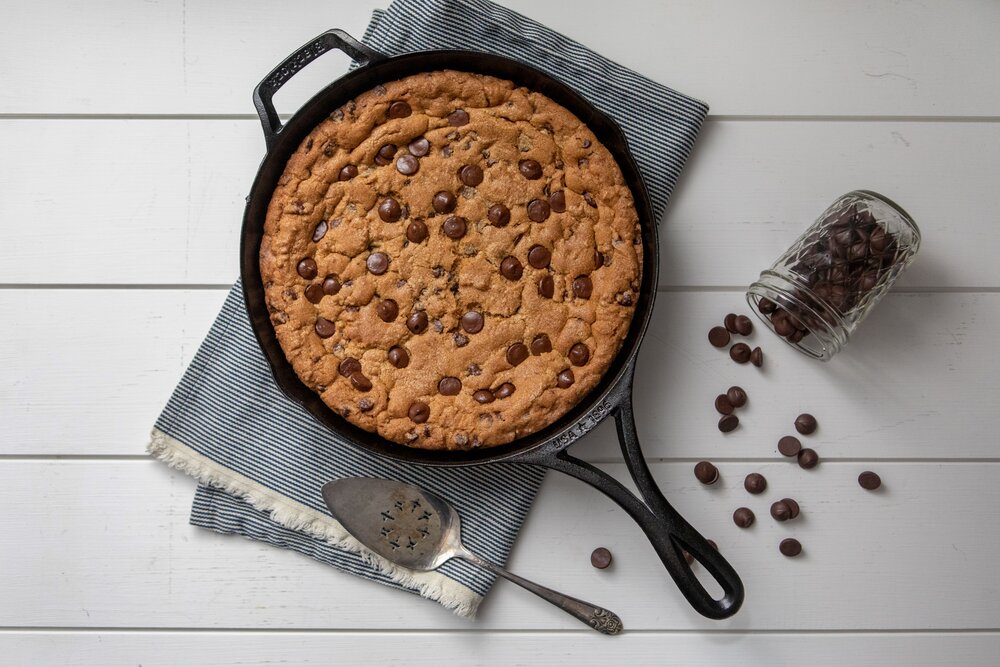
Fried Okra
When I think about truly farm-fresh cooking okra always comes to my mind. It’s kind of that quintessential vegetable that just feels rustic and earthy.It might surprise you to know that I didn’t grow up eating okra at home. It was never something my Mom cooked, perhaps she didn’t like the texture. Quite frankly, I don’t really love it all that much myself. OK, there, I said it.
But, there’s something about a cornmeal crust that gets me every time. A neatly fried, slightly sour from the buttermilk, salted-to-perfection little coating around the okra almost completely forgives its slimy interior texture. The more I give it a try, when done right, the better it seems to get. So I’m giving it a try here, as part of my Southern Kitchen Bucket List, trying to practice and perfect it as best I can.
You see, I think it really is a beautiful vegetable. The long pods of okra with the soft matte exterior, cut into chunky bites that are almost flower-like in shape. The tiny little white seeds scattered around amidst the silky, sticky liquid inside. It’s hard to not try to keep it just as perfect as it began.Every time we visit the farmers market it just calls my name and I have been trying to experiment with trying it a few different ways to shake things up. Pickled with a Bloody Mary is at the top of the list, in case you were interested.But this time my Fried Okra was the best yet. Crispy and crunchy and bite-sized. Just the perfect ratio of cornmeal so the texture was dead on. I hope you’ll give it a go.
For my fried okra recipe, click here.

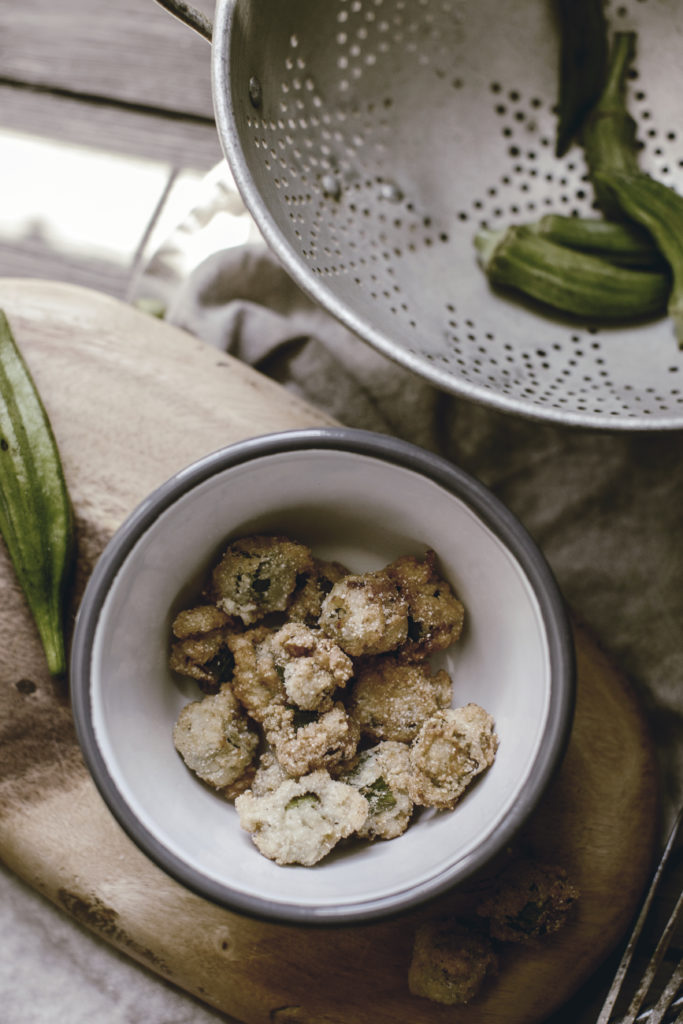
Classic Cornbread
This classic is sure to be a family favorite. Serve this up in a traditional cast iron cornbread pan.
Growing up one of my favorite smells was fresh cornbread. It reminds of being in the kitchen with my grandmother and gathering around the table during the holidays. Over time I have experimented with different recipes, but I always come back to this classic recipe that has been passed down to me. To me, classic cornbread must always have real kernels of corn mixed in. Even if you are using a boxed mix, you can easily add in some freshly steamed kernels of corn and instantly it makes the recipe seem even more homemade and delicious.
Recently I came across this perfect little cast iron cornbread pan from Lodge. I see them all the time when I’m out vintage shopping and always pick them up when I see a good one. I knew it would be great for the holidays to add a fun element to our classic cornbread over a simple muffin.
For the classic cornbread recipe, click here.
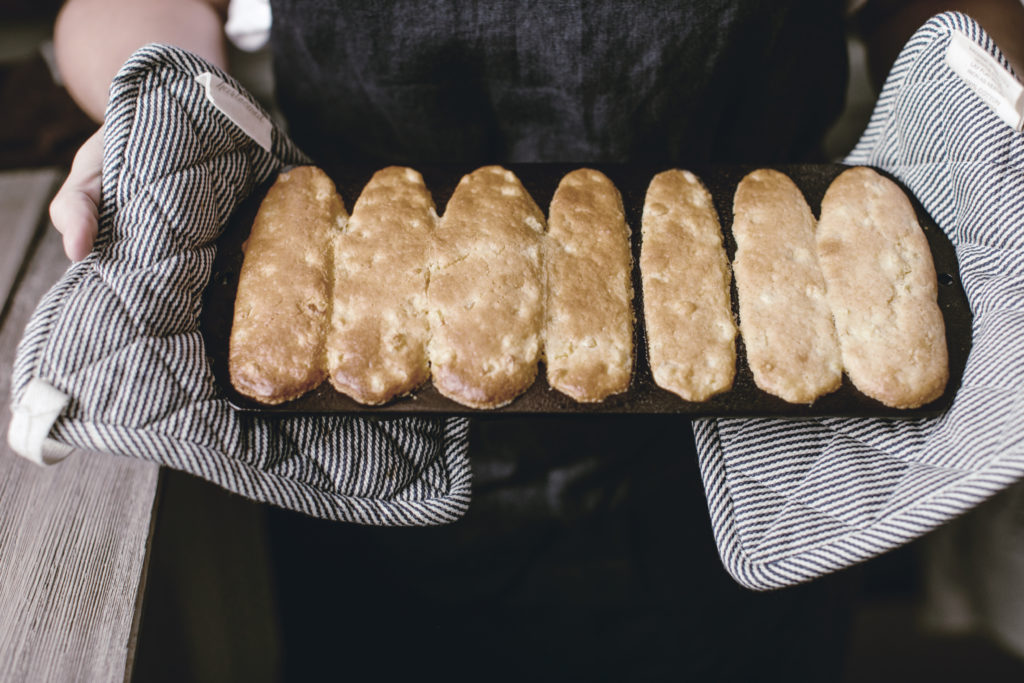
heirloomed is a lifestyle brand with a mission of “keeping heirlooms around for another generation.” Our blog features stories about my favorite made-from-scratch recipes, creating traditions with your family, farmhouse home decor, effortless entertaining by mixing new and vintage pieces, tips on gardening creating a timeless capsule wardrobe, and small town + historic travel. Our product designs feature a collection of “goods inspired by the past, for generations to enjoy” with an array of aprons, table linens, hand-poured candles and keepsake gifts. Learn more at www.heirloomedcollection.com.

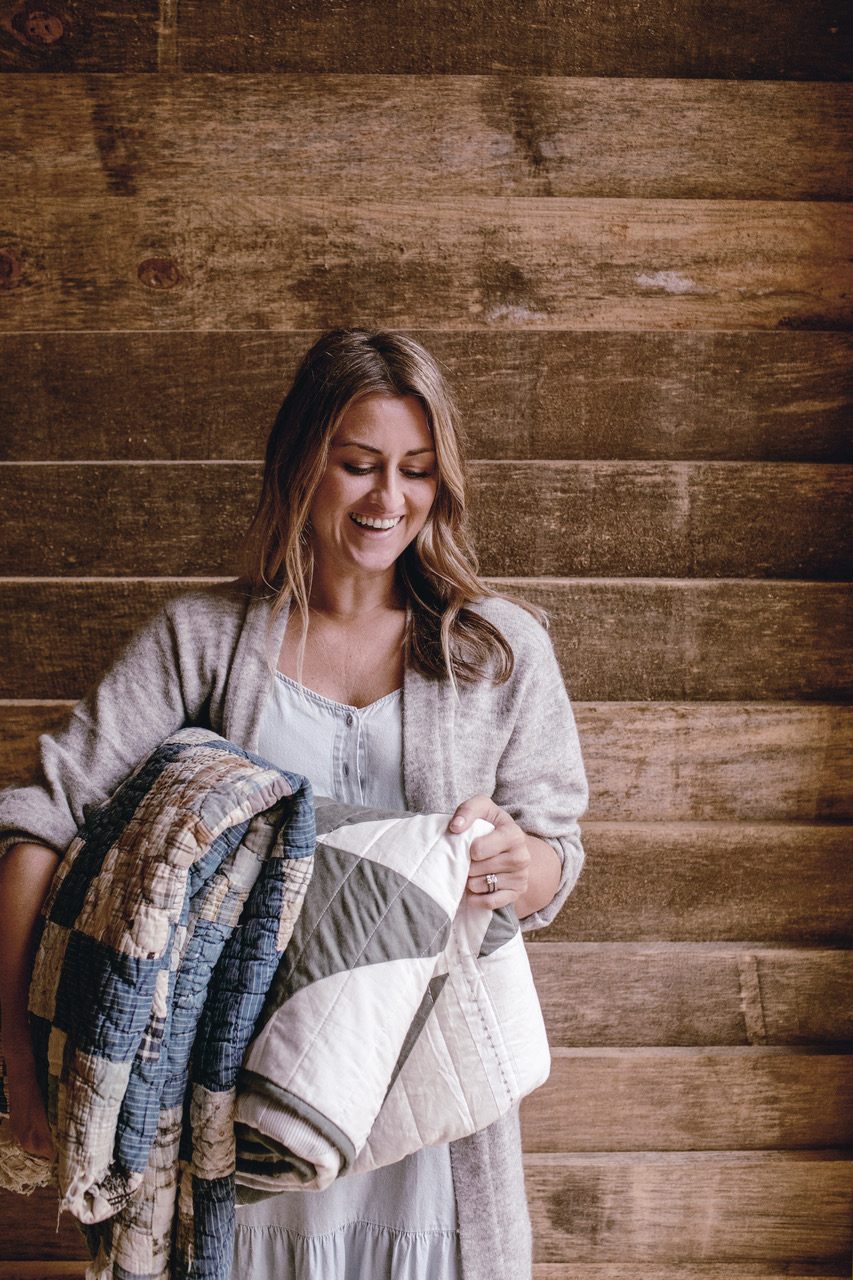
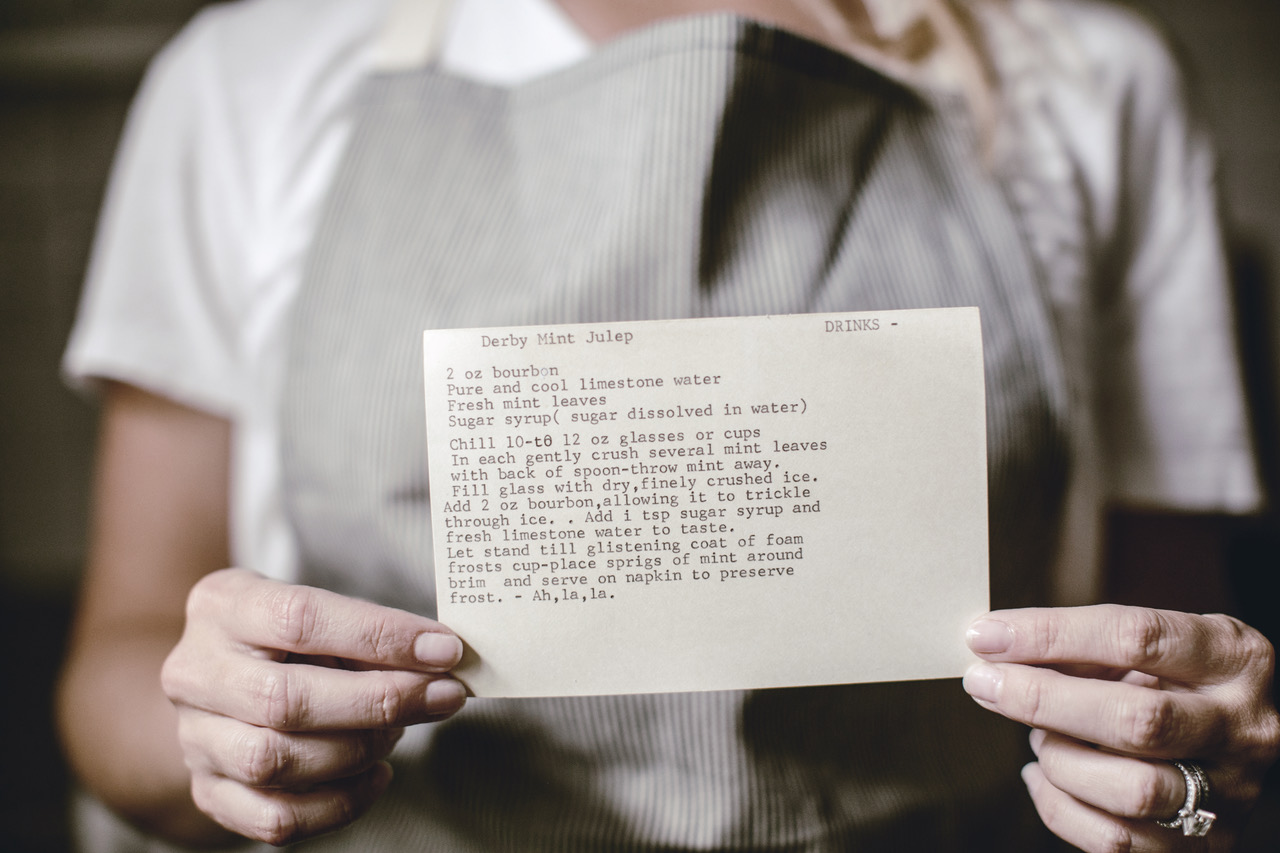

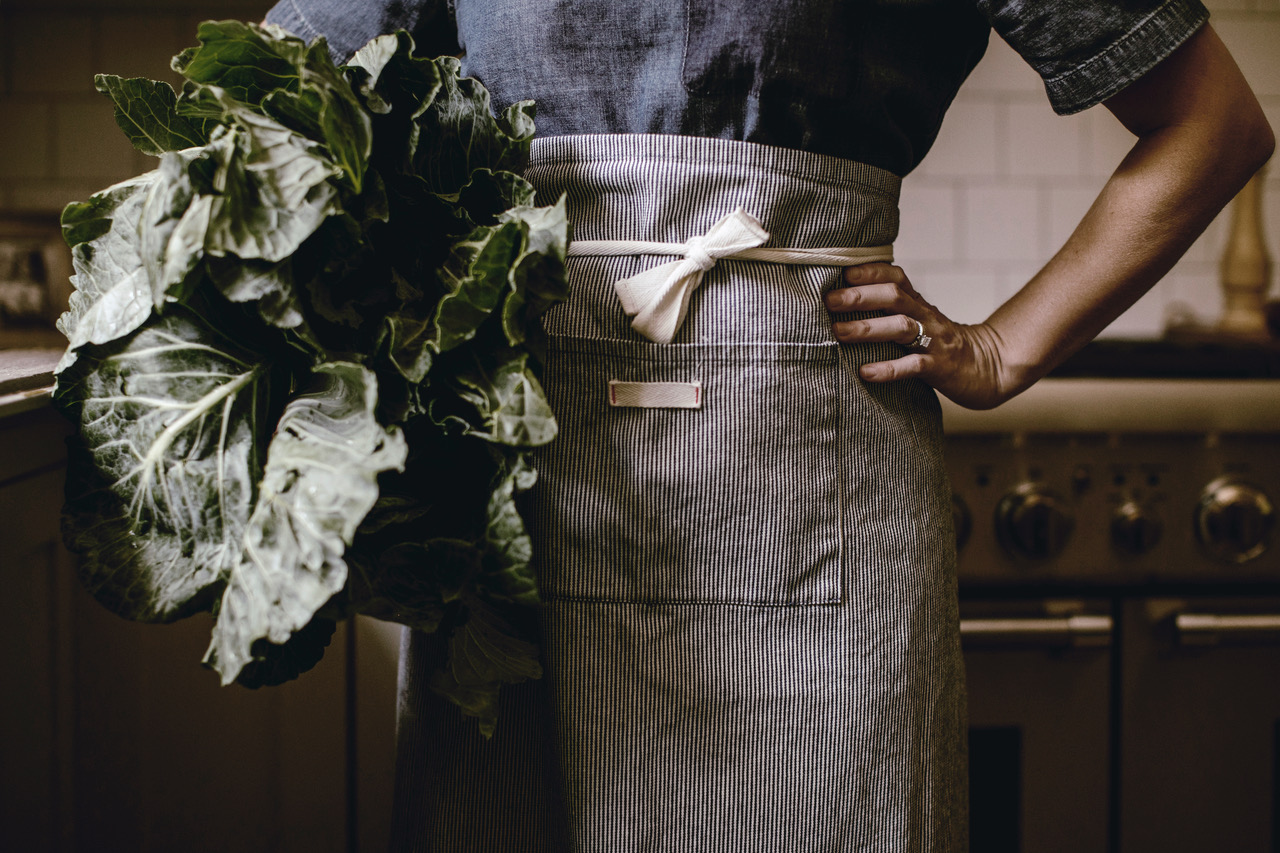

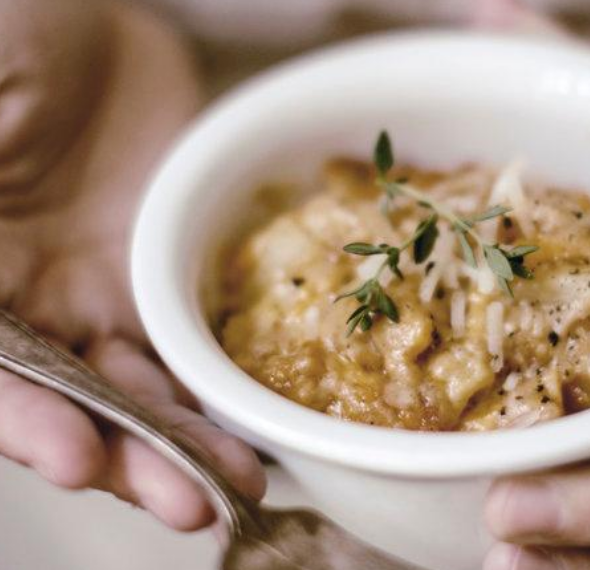





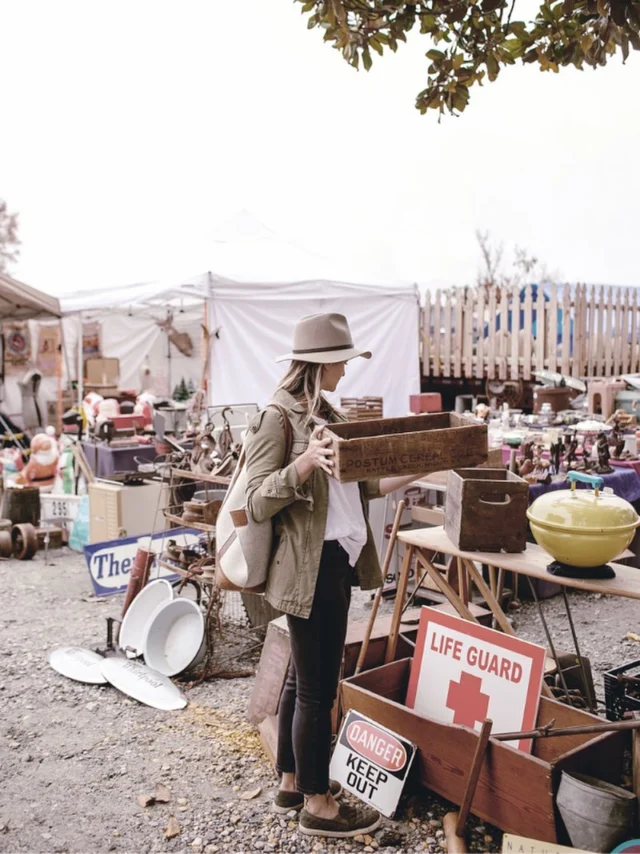
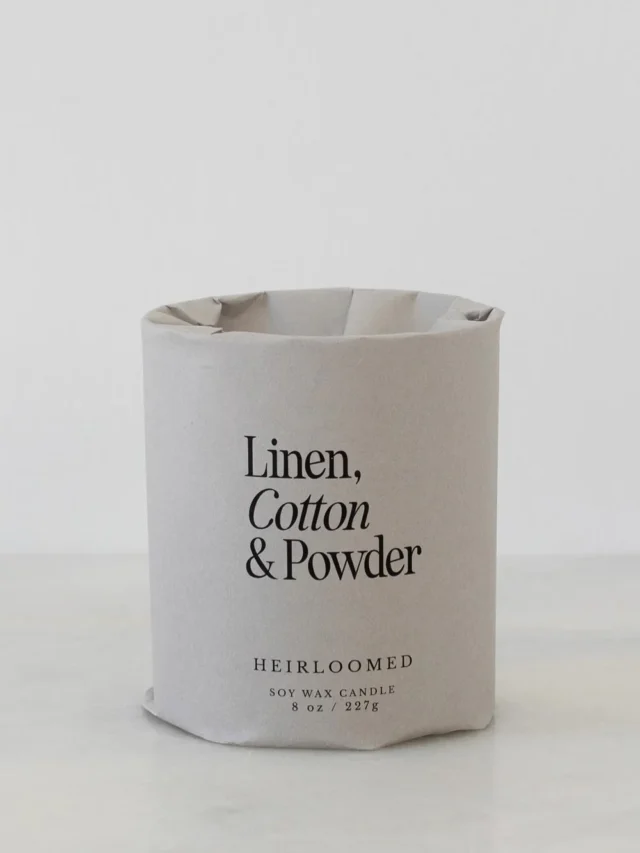



Recent Comments